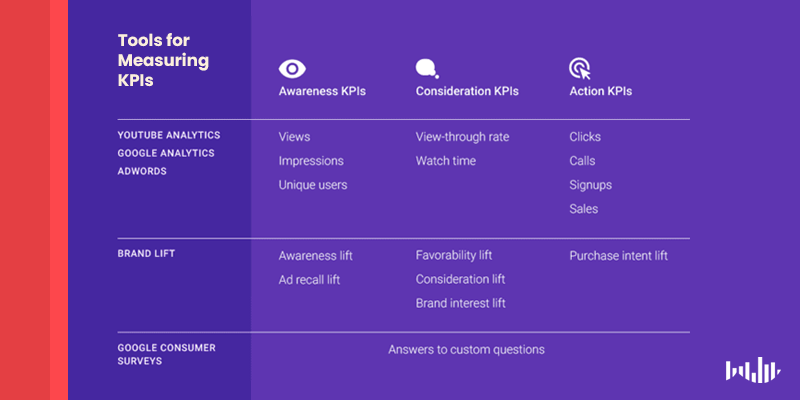Market Research Guide for Advertising

Although a major subsector of marketing, advertising is often treated as a secondary task, one with a scarce backup of data to deliver outstanding ad campaign results. To add insult to injury, a sweeping 76% of marketers in 2020 did not rely on behavioral data for ad targeting.
This is dismal news, given the fact that despite being barraged with 1,700 ads per month, users only view half of them. It occurs in the face of a costly worldwide ad expenditure, which is forecasted to reach $375 billion by 2021.
Market research is therefore undoubtedly necessary. A wide-spanning umbrella term, it refers to collecting and analyzing data about your target market and your competitors, along with the traits, trends and changes in the overall market you serve.
Consequently, it is evident that advertising requires its own market research. This guide will teach you how to carry out market research for advertising.
Advertising Market Research at a Glance
Advertising market research is a form of research concentrated on advertising campaigns. As such, its ultimate aim is to identify the most effective ads within a company’s target market.
The process of market research for advertising includes pre-campaign efforts as well as post-campaign scrutiny. This includes setting up advertising campaigns, narrowing in on your target market, deducing which ads are best and measuring the success of your ad campaigns.
You’ll find that market research plays a critical role in each stage of this advertising development process. Let’s get a more thorough rundown to learn how to set up an effective advertising campaign through market research tailored specifically towards it.
Pre-Campaign Market Research: Setting Up Your Ad Campaign
We caution you to never jump headfirst into an advertising campaign. Before running a campaign, you must set it up through planning. Pre-campaign efforts include three stages, all of which are fueled by market research.
Here are the first three stages:
Stage 1: Acquire a deep understanding of your target market.
You cannot lay the groundwork for an ad campaign before you understand who your target market is, along with the different segments it encompasses. By understanding these groups, you’ll be able to create general ads that target the entirety of your target audience, along with ads tailored more towards the different segments within your target market. Here is what you will need to nail down both of these groups:
Set up a survey that covers a wide net of demographics. Ask questions to gauge which demographics show the most interest in your brand.
Determine which demographics show the most favorability towards your brand, offering or messaging. This is your target market.
Arrange psychographic surveys across the demographics most conducive to buying from you. This will give you direct insight into the psyche into specific demographics, revealing the different segments within your target market.
Stage 2: Set Up Micro and Macro Advertising Campaign Objectives
Now that you’ve nailed down your target market and have zeroed in on the different segments within it, you can begin planning your advertising campaign. Each campaign, sub-campaign and ad itself will require an objective.
Otherwise, you won’t know how to measure the performance and success of each component of your campaign(s). Here are the objectives to focus on and how to do so:
Pin down the purpose of a new campaign. Or do so with a number of campaigns. Typically, an advertising campaign seeks to:
to inform your target market about a new offering.
to persuade consumers to convert (either by buying, subscribing, signing up for the new or existing offering).
to remind your target market where and how to access the offering.
Find the proper media channels to deliver your advertisements. Think about the purpose of your campaign; can a particular channel deliver it best, or perhaps, can it do so partially?
Collect secondary research on your target market. This will help you discover which advertising channels work well across general target markets.
Collect primary research by creating surveys that unveil the messaging preferences of each segment of your target market.
Narrow down the advertising channels for your campaign. These include:
Display ads (landing pages, pop-ups, banners)
Social media ads
PLA ads (via Google Adwords or Criteo)
Native Ads
PPC
Stage 3: Set Up a Budget for Your Advertising Campaign
The shortest stage within the advertising research and development process — although not trivial in the slightest — setting up a budget is necessary before you do any conceptualizing.
Market Research During the Campaign
Following the first three pre-campaign, pre-planning stages, we move along to the campaign itself. Now that you’ve done the market research on your target audience, set campaign and sub-campaign objectives and set a budget, you can start conceptualizing the operation itself.
Here is how to proceed:
Stage 4: Create the Central Messaging Behind Your Campaign
Decide on a concept; it can be a theme or a central narrative to all your ads.
Make sure your idea is precisely targeted to your target market, along with the segments of your target market.
Next, create the ads themselves. An ad should possess the following qualities:
Relevance to the target audience
Value in purchasing and using
Uniqueness to set yourself apart from competitors
Credibility — your customers should believe your ad, don’t make it seem too good to be true.
Get into the nitty grid of your sub-campaigns and ads themselves
Decide which channels you chose previously work best for which ad type
Decide what to incorporate into each medium (ex: do you need a video in each medium or only copy, etc.)
Based on the surveys you’ve run, decide which ads to expose to particular segments of your target market. You can add more surveys for research purposes.
Set a frequency, ie, how many times your audience will receive your ads
Launch your advertising campaign
Post-Campaign Efforts
Market research doesn’t end after you launch your advertising campaign. Its performance gives you another great opportunity to study your target market, along with your ensuing marketing efforts.
It will also inform your new campaigns and new ads as part of your current, ongoing one. This brings us to the final stage.
Stage 5: Keep Track of Your Advertising Performance
Tracking the effectiveness of an advertising campaign will differ based on the KPIs you set. These will depend largely on the medium you use to distribute your ads.
Attribute several KPIs to monitor during your campaign. Here are some to consider:
Conversions
Return on Ad Spent (ROAS)
Cost Per 1,000 Impressions
Impressions
Cost per click (CPC)
Click-Through Rate (CTR)
Cost Per Acquisition (CPA)
Observe these KPIs daily on a web analytics platform like Google Analytics or Adobe Analytics. Or, set up your campaign and track it on a specialized platform like Adroll.
Create surveys that target the same segments from your campaign. These can help you see how your customer base reacts to them.
Test them on images (preferences on 1 over the other).
Ask them questions to expand and refine the current campaign.
Come up with questions for new campaign ideation.

Closing off on Market Research for Ads
After Stage 5, you should have established a familiarity with your target market and your industry — at least to some extent. With all this data in tow, you can go about new ad campaigns armed with this new customer knowledge. More importantly, the market research you’ve picked up during this process will help inform all of your marketing efforts.
After all, the purpose of this research is to equip your brand with a deep understanding of your customers to make smarter business decisions. After gathering enough market research, you may try going bold in your next advertising venture.
Frequently asked questions
What is advertising market research?
Advertising market research focuses on advertising campaigns, with the purpose of improving campaign strategy by identifying the most effective campaigns.
What is the process for conducting advertising market research?
The process for advertising market research involves pre-campaign planning, continues with research while campaigns are running, and ends with post-campaign analysis.
What is pre-campaign market research?
Pre-campaign market research encompasses all the planning activities that happen before an advertising campaign is deployed. This includes gaining a deeper understanding of the target audience, establishing campaign objectives, and establishing a budget for the campaign.
What are KPIs?
KPI stands for “Key Performance Indicator.” KPIs are used to evaluate the success of a business or specific activities within that business, such as advertising campaigns.
How can advertising market research improve future campaigns?
By looking at the KPIs of campaigns, a company can determine which campaigns were most effective and repeat this type of campaign, or reuse aspects of the campaign in future advertising efforts.
Pollfish Marketing Team
Ready to Try Pollfish?
Create your survey with AI, target high-quality respondents starting at $0.95 per complete, and start getting results in just minutes in real-time. From running a simple product concept survey to managing a constant stream of trackers for dozens of clients in dozens of countries, we’ve got you.

